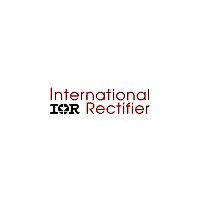IP1206TRPBF International Rectifier, IP1206TRPBF Datasheet - Page 21

IP1206TRPBF
Manufacturer Part Number
IP1206TRPBF
Description
IC PWR BLOCK MULTIPHASE 30A LGA
Manufacturer
International Rectifier
Series
iPOWIR™r
Type
Step-Down (Buck), PWM - Voltage Moder
Datasheet
1.IP1206TRPBF.pdf
(30 pages)
Specifications of IP1206TRPBF
Internal Switch(s)
Yes
Synchronous Rectifier
Yes
Number Of Outputs
1 or 2
Voltage - Output
0.8 V ~ 5.5 V
Current - Output
30A, 15A
Frequency - Switching
200kHz ~ 600kHz
Voltage - Input
7.5 V ~ 14.5 V
Operating Temperature
-40°C ~ 125°C
Mounting Type
*
Package / Case
*
Package
LGA - 15.5 x 9.25
Circuit
Single Output or Dual Ch
Iout (a)
30
Switch Freq (khz)
200 - 600
Input Range (v)
7.5 - 14.5
Output Range (v)
0.8 - 5.5
Ocp Otp Uvlo Pre-bias Soft Start And
Pre-Bias + SEQ + SYNC + Tracking
Pbf
PbF Option Available
Lead Free Status / RoHS Status
Lead free / RoHS Compliant
Available stocks
Company
Part Number
Manufacturer
Quantity
Price
Company:
Part Number:
IP1206TRPBF
Manufacturer:
IR
Quantity:
4 216
Company:
Part Number:
IP1206TRPBF
Manufacturer:
NEC
Quantity:
200
www.irf.com
H
To cancel one of the LC filter poles, place the zero
before the LC filter resonant frequency pole:
Using equations (16) and (18) to calculate C9.
One more capacitor is sometimes added in parallel
with C
which is mainly used to suppress the switching
noise.
The additional pole is given by:
The pole sets to one half of switching frequency
which results in the capacitor C
For a general solution for unconditionally stability
and any type of output capacitors, in a wide range of
ESR values we should implement local feedback
with a compensation network (typeIII). The typically
used compensation network for voltage-mode
controller is shown in Fig. 22.
In such configuration, the transfer function is given
by:
The error amplifier gain is independent of the
transconductance under the following condition:
By replacing Z
transformer function can be expressed as:
(
s
g
)
m
=
*
sR
9
Z
F
F
f
6
and R
C
For
z
z
(
>>
C
=
=
POLE
1
11
75
. 0
1
F
+
F
in
75
%
P
P
=
and
C
4
and Z
V
V
=
<<
*
. This introduces one more pole
F
π
12
C
LC
e
o
2
)
2
9
*
π
π
F
*
2
=
=
R
s
⎡
⎢
⎣
*
g
2
4
1
f
1
(
L
1
R
1
1
according to figure 15, the
π
*
m
1
+
o
+
4
+
F
*
−
*
*
sR
*
s
C
R
sR
1
g
1
Z
g
C
C
−
o
4
7
m
in
9
9
m
⎛
⎜ ⎜
⎝
*
C
7
Z
1
C
+
*
Z
C
F
>>
C
9
C
11
C
IN
z
POLE
f
11
11
POLE
≅
* )
-
POLE
1
+
*
- -
π
C
[
C
1
:
-(18)
*
12
12
+
R
-
⎞
⎟ ⎟
⎠
1
sC
⎤
⎥
⎦
4
- -
( *
*
10
F
-(19)
1
(
s
R
+
6
sR
+
2/26/2008
R
8
C
8
10
)
]
)
H(s) dB
As known, transconductance amplifiers have
high
therefore, care should be taken when loading the
E/A output. It may exceed its source/sink output
current capability, so that the amplifier will not be
able to swing its output voltage over the
necessary range.
The compensation network has three poles and
two zeros and they are expressed as follows:
Cross over frequency is expressed as:
Z
Fig. 22: Compensation network with local
IN
F
F
F
F
F
Gain(dB)
P
P
P
1 z
z
1
2
2
3
R
=
=
=
C
impedance
=
=
8
feedback and its asymptotic gain plot
10
0
2
2
2
2
F
F
π
π
π
π
o
V
Z
*
=
1
*
OUT
*
*
R
C
R
R
R
1
R
R
1
7
10
7
8
7
6
5
⎛
⎜ ⎜
⎝
*
*
*
( *
1
1
C
F
C
C
C
C
Z
11
10
11
R
V
11
10
2
Fb
REF
6
*
+
*
(current
V
+
C
C
V
osc
in
12
R
12
iP1206PbF
8
*
⎞
⎟ ⎟
⎠
)
R
2
≅
≅
7
F
π
E/A
P
2
2
*
2
π
π
L
1
source)
C
o
*
*
*
12
R
C
1
C
1
7
10
o
F
*
C
*
P
C
Comp
3
11
R
12
6
Frequency
outputs,
Z
Ve
f
21












